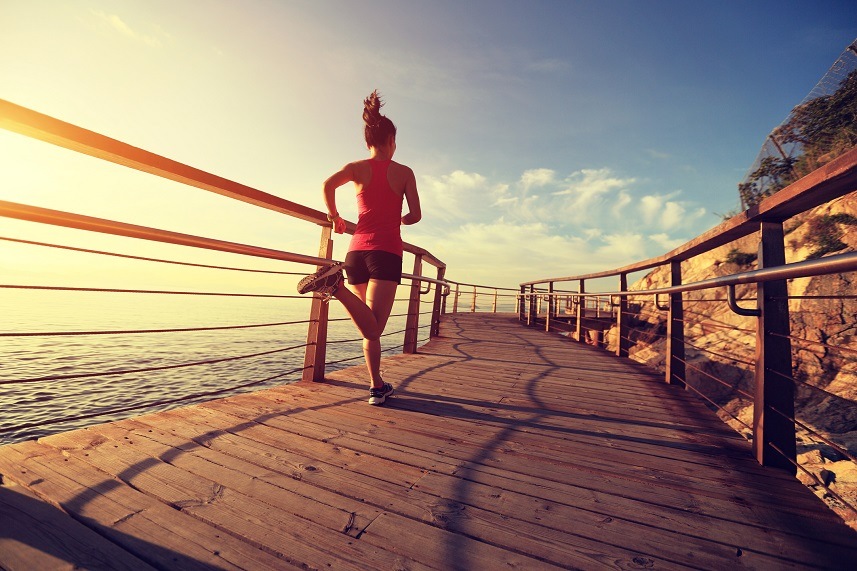Summer seems like the perfect time to be exercising outside. That is, until it’s actually summer and you realize just how brutal the heat can be anytime you step outdoors — let alone for a workout. If you do choose to exercise outside, it’s extremely important to take cautions against the serious health risks involved with the summer heat.

Heat-related illnesses
Exerting your body in the heat can lead to some serious illnesses. According to Family Medicine doctor Kathryn Greiner, those illnesses can range from mild heat cramps to a severe heat stroke. She recommends always checking the heat index. If it’s over 100 degrees, you should opt for an indoor workout.
“The key to exercising in the heat is hydrating, stretching, and what’s called acclimatization,” Dr. Greiner says. “Your body has to get used to working out in the heat.”
According to personal trainer Carla Branch, it can take up to 14 days for your body to adjust to the hotter temperatures. She explained her usual method for her clients preparing for an outdoor summer event, such as a marathon: “They have to try to get out in the middle of the day when it’s hot and exercise in order to acclimate to the conditions for the event.”
Dehydration
Dehydration is a major risk when exercising outdoors, so be sure to drink plenty of water before and during your workout. As exercise physiologist Jaime Roberts pointed out, our bodies are usually warmer than the environment. However, that’s not always the case in the hottest months of the year, so we’ll sweat more excessively to regulate temperatures.
“The body cools off by sweating, and as long as you remain hydrated, the body is able to cool itself off,” according to Roberts. “If the body can no longer cool itself, it starts storing heat inside. The core temperature begins to rise and you put your internal organs and central nervous system at risk.”
Knowing just how much to drink around your exercise is key. Roberts recommends you drink 20 ounces of water two hours prior to your exercise and at least 8 ounces shortly before. Throughout your workout, you should take a sip every 15 to 20 minutes. However, be sure to drink water throughout the entire day — not just around your exercise — to stay fully hydrated.

Sun damage
When you’re exercising outside, you’re bound to be exposed to the sun for an extended period of time. Prevention against sun damage is crucial, as it can lead to sunburn, wrinkled skin, or even skin cancer. According to the Skin Cancer Foundation, you should use a water-resistant, broad spectrum (UVA/UVB) sunscreen with an SPF of at least 30. Apply one ounce to your body 30 minutes before heading out, and be sure to reapply every two hours. However, you should do so immediately if your exercises involves swimming or excessive sweating.
If it’s possible, try finding a shaded area for your outdoor workout. Exercising outdoors can be particularly brutal between the hours of 10 a.m. and 4 p.m., so either avoid those hours altogether or take special precaution to keep yourself safe.
Check out The Cheat Sheet on Facebook!
Source: Read Full Article